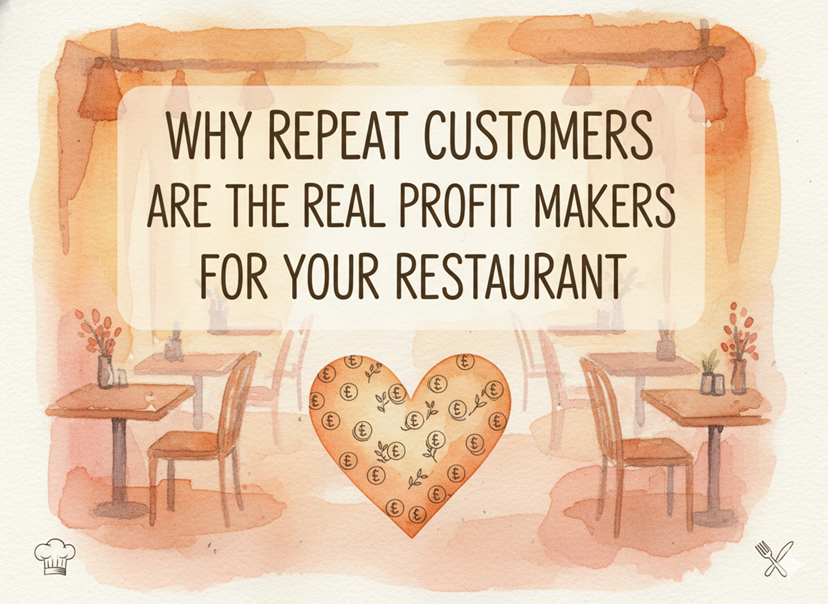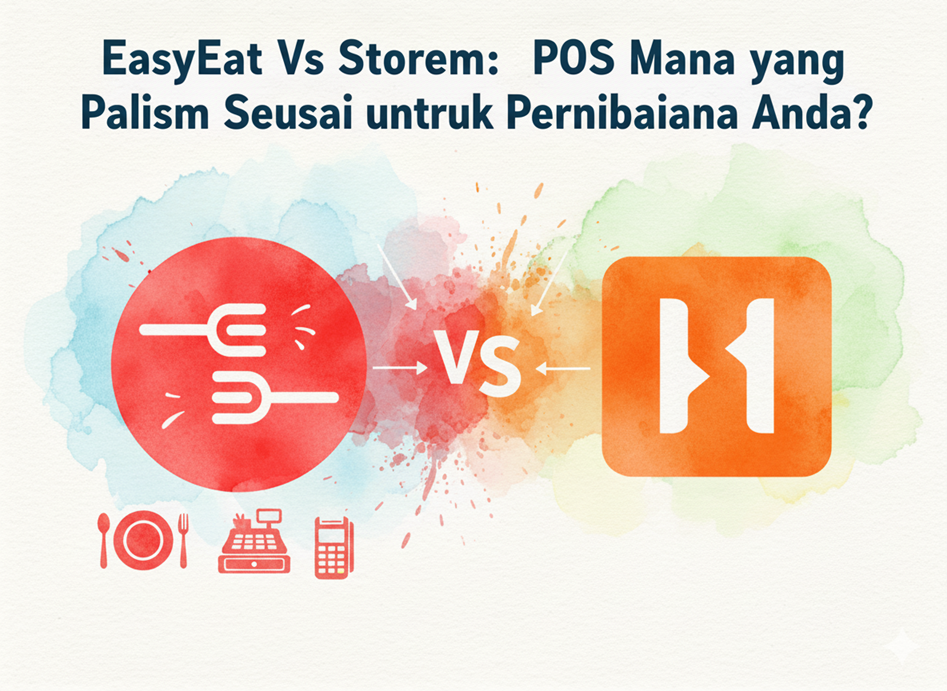Managing inventory can feel overwhelming, but it doesn’t have to be. When you understand the key terms and how they affect your business, you can make smarter decisions, reduce waste, and keep costs under control.
In this guide, we’ll explain 19 essential inventory definitions that are inventory turnover, par level, COGS, FIFO, LIFO, Waste Tracking, Theoretical V/s Actual Usage, Reorder point, Vendor lead time, Batch Tracking, Dead Stock, Shrinkage, perpetual inventory, Periodic Inventory, Unit Cost, Recipe Costing, Consignment inventory, Cross Utilization and Just in Time Inventory.
Read about them in detail and also find out how you can track each of these terms!
What Inventory Definitions are Important for You to Know?
1. Inventory Turnover
Inventory turnover calculates how frequently you sell and restock items. Divide total sales by average inventory value to get this ratio. High turnover (4-8 times monthly for perishables) indicates good sales and fresh products. Low turnover suggests overordering or poor sales. For example, a turnover of 3 means you fully replenish stock three times in that period. This metric helps identify slow-moving items wasting space and money. Track it weekly to optimize ordering. The ideal ratio varies by product type – produce needs higher turnover than canned goods. Regular analysis prevents cash from being tied up in excess inventory.
2. Par Level
Par level represents the minimum quantity of each item needed between deliveries. Calculate it by analyzing usage patterns and lead times. If you use 10 lettuce heads daily with 2-day deliveries, set par at 25 (accounting for variability). This system prevents shortages without overstocking. Review the pars monthly, adjusting for seasonality and menu changes. Digital tools can automate par-level tracking. Proper planning reduces emergency orders and food waste. Staff should know when items dip below par to reorder promptly. This balance ensures smooth operations while minimizing storage costs and spoilage risks from excess inventory sitting unused.
3. COGS (Cost of Goods Sold)
COGS includes all direct expenses for ingredients and materials used in menu items. Calculate it by: (Beginning Inventory + Purchases) – Ending Inventory. This reveals your actual food costs. Most operations maintain 28-35% COGS for profitability. Higher percentages indicate potential issues like waste, theft, or incorrect pricing. Track COGS weekly to spot trends. Compare it to theoretical food costs based on recipes to identify discrepancies. Controlling COGS is crucial for maintaining healthy margins. Detailed COGS tracking helps pinpoint problem areas needing correction, whether in purchasing, portioning, or preparation processes affecting your food expenses.
4. FIFO (First In, First Out)
FIFO means using the oldest inventory first. When new stock arrives, place it behind existing items so older products get used before expiring. This system is essential for perishables with short shelf lives. Implement FIFO by dating all products and organizing storage areas logically. Train staff to rotate stock properly during restocking. FIFO reduces spoilage losses significantly – studies show proper rotation cuts food waste by 15-20%. It also ensures customers receive fresher ingredients. Consistent FIFO practices help maintain food quality while minimizing financial losses from expired goods that must be discarded.
5. LIFO (Last In, First Out)
LIFO uses the newest inventory first, leaving older stock unused. While sometimes used in accounting for tax benefits, it’s generally unsuitable for foodservice. LIFO increases spoilage risks as older items expire before use. The only potential application might be for non-perishables with extremely long shelf lives. However, even dry goods can degrade in quality over time. Most operations should avoid LIFO entirely for food items. The exception might be specific industrial operations where product uniformity is guaranteed. For restaurants, FIFO remains the standard as it better preserves food quality and minimizes waste from expired products.
6. Waste Tracking
Waste tracking involves systematically recording all food that gets discarded, whether from spoilage, preparation errors, or customer plates. By categorizing waste types and quantities, you identify patterns like specific ingredients frequently going bad or dishes commonly returned. Implement daily waste logs where staff note what’s thrown out and why. Analyzing this data reveals opportunities to adjust purchasing amounts, improve storage methods, or modify prep procedures. The USDA estimates restaurants lose $162 billion annually to food waste. Regular waste tracking can reduce these losses by 20-30%, directly improving your food cost percentage and overall profitability through smarter inventory decisions.
7. Theoretical vs. Actual Usage
Theoretical usage calculates expected consumption based on recipe quantities multiplied by items sold. Actual usage comes from physical inventory counts. Comparing these figures highlights discrepancies indicating potential issues like portioning errors, unauthorized consumption, or incorrect recording. A 5% variance might be normal, but consistent 10-15% differences signal problems needing investigation. This analysis helps detect if staff are over-portioning, if recipes aren’t being followed precisely, or if there’s unexplained inventory loss. Maintaining detailed sales records and conducting regular physical counts makes this comparison more accurate, enabling better cost control and identifying training opportunities for kitchen staff.
8. Reorder Point
The reorder point is the specific inventory level triggering a new purchase order to avoid stockouts. Calculate it by multiplying the daily usage rate by the supplier lead time, then adding a safety buffer. For example, using 5 lbs of cheese daily with a 3-day delivery and 2-day buffer gives a reorder point at 25 lbs. This prevents emergency purchases while minimizing excess inventory. Factors like seasonal demand fluctuations or supplier reliability may require adjusting your reorder points periodically. Digital inventory systems can automate reorder alerts when stock dips below predetermined levels, ensuring continuous supply without manual monitoring of every ingredient.
9. Vendor Lead Time
Vendor lead time measures the days between placing an order and receiving goods. This critical metric varies by supplier and product type – produce may have 1-2 day lead times while specialty imports could take weeks. Document each supplier’s average lead time and build relationships to improve reliability. Unexpected delays force last-minute menu changes and increase food costs. Maintain backup suppliers for key items with long lead times. Consider lead time when calculating reorder points – a 7-day lead time requires ordering sooner than a 2-day lead time. Tracking this helps negotiate better terms and plan purchases more strategically.
10. Batch Tracking
Batch tracking involves recording inventory by specific production lots or delivery groups, noting supplier details and expiration dates. This system becomes crucial during product recalls or quality complaints, allowing you to quickly identify affected items. Implement by labeling all received goods with batch numbers and entering this data into your inventory system. When issues arise, you can trace problems to specific shipments rather than discarding all stock. This method also helps rotate inventory more effectively by identifying which batches should be used first. While requiring more detailed record-keeping, batch tracking reduces risk and potential liability from serving compromised ingredients.
11. Dead Stock
Dead stock refers to inventory items that haven’t moved in an extended period, typically due to being obsolete, seasonal, or improperly stored. These items tie up capital and storage space while potentially expiring worthless. Identify dead stock through inventory aging reports showing items with no recent usage. Prevent accumulation by analyzing sales data before purchasing new items and avoiding bulk buys of untested products. Creative solutions include special promotions to move slow items or repurposing ingredients into new dishes. Regular inventory audits help spot dead stock early when it still has value, allowing for timely action before complete write-offs become necessary.
12. Shrinkage
Shrinkage represents inventory losses from theft, spoilage, or accounting errors. In Malaysia, F&B businesses typically lose RM2,000-RM5,000 monthly to shrinkage. Implement control measures like CCTV monitoring for high-value items, strict receiving procedures, and regular audits. Train staff on proper handling to minimize accidental waste. Digital tracking systems help identify shrinkage patterns – if your chicken inventory shows 10% more loss than recipe requirements indicate, investigate potential causes. Addressing shrinkage directly improves profitability, as every 1% reduction can save RM1,200 annually for a medium-sized outlet. Combine technology with staff accountability for the best results.
13. Perpetual Inventory
Perpetual inventory systems maintain real-time stock records through digital tracking. Each sale or usage automatically deducts from inventory counts, while purchases get added immediately. Cloud-based POS systems like StoreHub or QPOS can integrate with inventory modules for RM300-RM800 monthly. This eliminates guesswork – you’ll always know exactly how many beef patties remain without physical checks. While setup requires barcode scanners (RM500-RM1,500) and staff training, the long-term benefits outweigh costs through reduced errors (human counting mistakes drop by 75%) and better purchasing decisions based on accurate, up-to-date data.
14. Periodic Inventory
Periodic inventory relies on scheduled physical counts, typically weekly or monthly. Staff manually check all stock levels, comparing amounts to previous records. This traditional method works for small cafes with limited inventory (under 150 items). While cheaper initially (no software needed), it’s time-consuming – a full count takes 4-6 hours for a typical mamak stall. Discrepancies only surface during count days, meaning shortages may go unnoticed for weeks. For accuracy, conduct counts during closed hours using standardized sheets. Though imperfect, it’s better than no system – just recognize it won’t catch issues as quickly as digital alternatives.
15. Unit Cost
Unit cost refers to an item’s price per standard measurement – RM8/kg for chicken, RM0.30/egg, or RM15/can of soda. Tracking this helps identify supplier price fluctuations; if your vegetable oil jumps from RM12 to RM15 per bottle, you’ll know immediately. Create a master price list that updates monthly. Negotiate bulk discounts when unit costs decrease for large orders, but only if you’ll use the quantity before expiry. This granular costing forms the foundation for accurate recipe pricing.
16. Recipe Costing
Recipe costing calculates exact food expenses per menu item. For nasi lemak: RM0.80 rice, RM1.20 chicken, RM0.30 sambal, etc., totaling RM3.10 cost. Compare your selling price (RM6.50) to determine profitability. Update costs quarterly as ingredient prices change – when chili prices spike 40%, adjust sambal costing accordingly. Use digital tools like Excel or specialized software to maintain recipes with current prices. This reveals which items have the best margins (your RM12 fried prawns may be less profitable than RM8 vegetable dishes). Accurate costing prevents underpricing and helps design profitable set meals.
17. Consignment Inventory
Consignment inventory involves suppliers placing products in your establishment without immediate payment. Common for premium beverages – a beer supplier might stock RM3,000 worth of inventory, you only pay for as sold. This preserves cash flow but requires meticulous tracking – you’re responsible for losses. Maintain separate storage and mark consignment items. Conduct weekly audits with supplier representatives to reconcile sold vs remaining stock. While convenient, limit consignment to 15-20% of total inventory to avoid over-reliance. Negotiate terms carefully – some suppliers charge 5-10% higher prices for consignment privileges, which may negate the cash flow benefits.
18. Cross-Utilization
Cross-utilization maximizes ingredient usage across multiple dishes. Chicken used in curry laksa, Hainanese chicken rice, and fried chicken wings ensures full utilization. A well-designed menu shares 60-70% of ingredients across dishes. For example, tomatoes appear in marinara pasta, salads, and sandwiches. This approach reduces waste – instead of throwing away leftover cilantro, use it in soups, chutneys, and garnishes. When creating new menu items, first consider how existing ingredients can be repurposed. This strategy cuts food costs by 8-12% while simplifying inventory management through fewer unique items to track and order.
19. Just-in-Time (JIT) Inventory
JIT inventory involves ordering products only when needed for immediate use. A sushi bar might order RM500 of fresh fish daily rather than stocking RM3,000 weekly. This minimizes storage space and spoilage but requires reliable suppliers – one delayed delivery forces menu changes. Implement JIT first for high-cost perishables (seafood, premium meats) with consistent local suppliers. Maintain a 1-2 day safety stock for critical items. Combine with accurate sales forecasting – if Fridays are 30% busier, adjust orders accordingly. Successful JIT reduces inventory holding costs by 25-40% but demands precise coordination between kitchen, management, and suppliers.
Why should you try EasyEat?
While EasyEat alone cannot help you in tracking all the metrics but it can help you in calculating your COGS. This single metric has the power to show you your best sellers, which you can promote more through your menu. If you promote those dishes that have a larger margin, you automatically make more profits. For calculating other terms like PAR level, recipe costing, theoretical vs. actual usage, batch tracking, unit cost, and shrinkage, you need to subscribe to a supplier management system like the Food Market Hub. Don’t worry, EasyEat has collaborated with the Food Market Hub, which means that you now get inventory management + supplier management for the price of just one!




